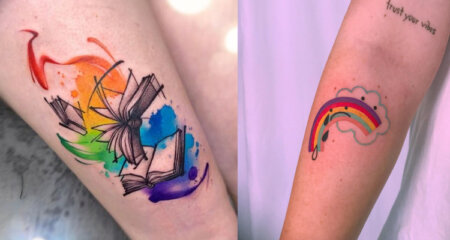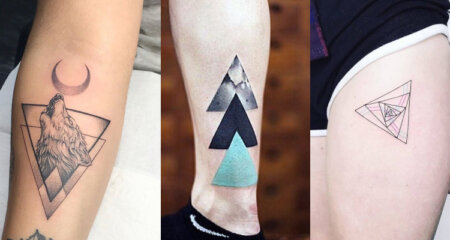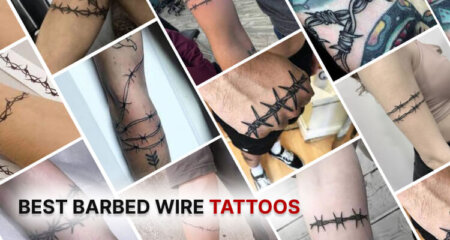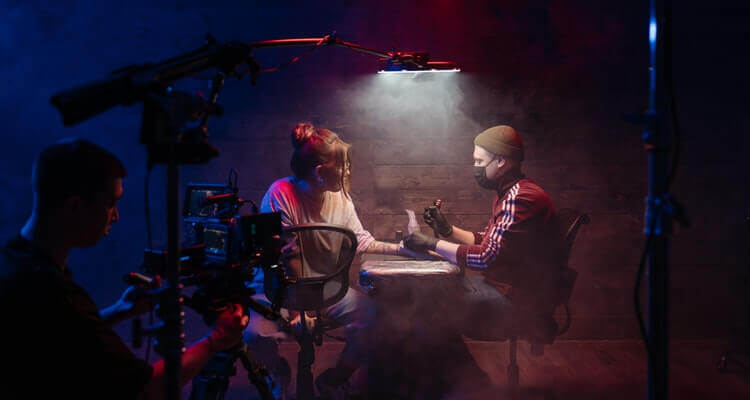
How Many Sessions Required For Tattoo Removal?
Posted on by Tattoo Expert
We all love body artwork; however, sometimes, it does not come out as expected. That’s when we feel the need to remove our existing tattoo. More often than not, a disappointing or distorted tattoo is the main cause of getting it removed. And tattoo removal is a process that helps wearers to get rid of that tattoo.
You can get your natural skin back without the signs of any artwork there if you get it removed by a professional. Professionals use the right technique and equipment to do the task; that’s why it is imperative to go to a professional only. When clients decide to get rid of their existing tattoo, there are many questions that hover, like how many sessions are required for tattoo removal, the best tattoo removal options, etc. Here in this post, we will discuss all the queries you may have before going for tattoo removal.
Here we go……
What Are The Different Tattoo Removal Options?
The first question that comes in mind before you decide to get your tattoo removed is the different options. There are myriad options to get rid of your tattoo, like dermabrasion, chemical peeling, surgical excision, and laser removal. However, the best amongst all is laser removal. Laser removal is safe, easy, and fast. Also, laser therapy leaves your skin intact after the treatment, unlike other procedures.
The rest of the other options may or may not work on your skin that perfectly. Sometimes there are chances that you may end up having a scar on the spot where you have your tattoo. Or you may not even get rid of your tattoo completely, as the other methods are not as effective as laser removal is. That is why most clients prefer laser removal of tattoos to get rid of their artwork.
What Types of Lasers are Used for Tattoo Removal?
Another question that most people want to know is this – different types of lasers. Well, there are a few different types of lasers used for tattoo removal. The newest of all is the Q-switched lasers. Q-switched lasers are considered the best among all. Some of the Q-switched lasers are as follows:
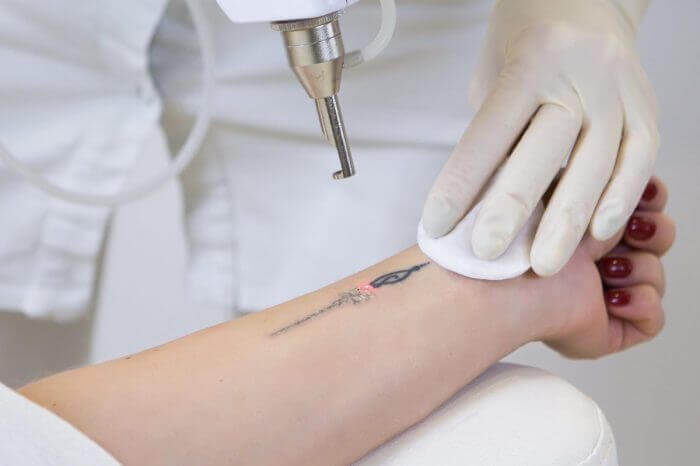
Q-switched Ruby laser: This laser operates at a wavelength of 694nm. And it is the most useful laser for removing dark pigments like black, blue, and green.
Q-switched Neodymium: YAG laser: Another Q-switched laser is Nd: YAG laser. This laser can operate at a wavelength of 1064nm or with a frequency-doubling crystal to shorten the wavelength to 532nm. This is very effective for removing dark blue or black ink. While at shorten wavelength, it becomes effective for the removal of red or orange ink.
Q-switched Alexandrite laser: Q-switched Alexandrite laser operates at a wavelength of 755nm; it resides between the ruby and Nd: YAG lasers. This is perfect for the removal of blue, green, and black tattoos.
Picosecond laser: Picosecond laser delivers short, and high-speed bursts of energy to the skin in a trillionth of a second. Photothermal and photomechanical effects caused by the ultra-short pulse durations break up the color pigment and eradicate it. This laser works best on green, black, and blue inks; however, it is also useful in the removal of yellow, orange, and purple inks.
How Many Tattoo Removal Treatments Are Needed To Get Rid Of The Tattoo Completely?
Well, the most common question that is asked by people is the number of tattoo removal treatments. The answer to this question will vary depending on several factors, like your age, your health; the age of your tattoo; the type of tattoo; the size of the tattoo; the location of the tattoo; the color and amount of color in the tattoo, etc. So, there is no fixed answer to this question. Only a professional who you visit for your tattoo removal can tell you the exact number of treatments after seeing your tattoo. So, the best is to consult a professional for your tattoo removal.
Broadly, based on size, it takes between five to ten sessions to remove a tattoo entirely. More prominent tattoos take up to the ten sessions; the smaller tattoo, on the other hand, may take closer to five sessions. Also, your health will determine the time taken. In most cases, healthier clients require fewer sessions to remove their tattoos. Since these clients take good care of their health, their skin is also in better condition, making the entire laser treatment easier and faster. For older patients, especially those who do not take care of their health or are chain smokers, laser treatment may take a little longer.
Besides, the type and amount of ink used on the tattoo will also impact the number of sessions. For instance, if your tattoo is too dark, it will take more time than the lighter one. Then the age of your tattoo will also determine the number of sessions. If yours is a newer tattoo, then it will take longer than the one which is old. With time tattoos tend to fade a bit, while new tattoos are fresh; they take more time.
How Long Do Laser Treatments Take?
You will never be able to get rid of your tattoo overnight, no matter whether it is big or small. There is no fixed timeframe, as different tattoo designs take different time to remove. Tattoo removal procedure takes time, and you need to give the process sufficient time. Even smaller tattoos take time to remove, let alone the bigger ones. Mostly these treatments are scheduled between a six to eight weeks gap. This means the whole process may take around 6 – 8 months to remove the small and medium tattoos altogether. While for big tattoo removal, you can expect anywhere between a year and more. However, you will start noticing a reduction in the tattoo just after your first session.
Related: Does Tattoo Removal Creams Really Work?
Pro Tip: Make sure you discuss the treatment options and how long it will take to remove a tattoo with your tattoo removal specialist. Your tattoo removal specialist will be able to schedule the treatments according to your schedule.
How Does Laser Tattoo Removal Work?
At first, your tattoo is cleaned, and a photograph of your tattoo is taken. During a laser tattoo removal procedure, the tattoo removal specialist glides a laser over the area of the tattoo. Unlike a laser pointer that produces a continuous beam of light, tattoo removal lasers produce pulses of light energy.
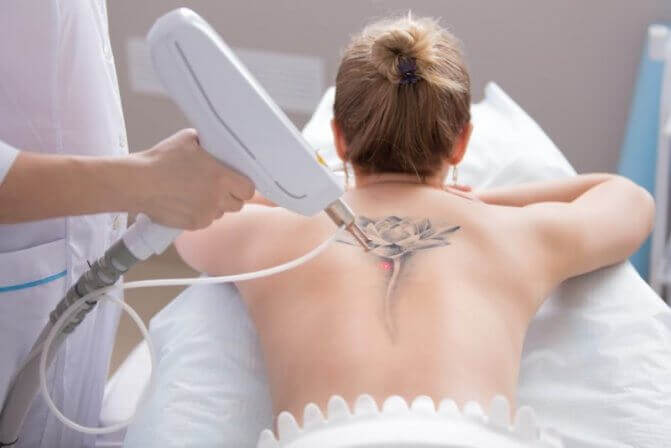
Each pulse of energy penetrates the skin and is absorbed by the tattoo ink. As the tattoo pigments absorb the energy, they heat up and then break up into tiny fragments. Then, gradually with each session, the body’s immune system starts flushing the tattoo ink particles away from the location, thereby lightening the appearance of the tattoo. Each laser treatment session breaks down more and more of the tattoo pigments until none remains.
The color and size of your tattoo will determine how long the treatment will take. As said earlier, bigger tattoos, especially with more color and details, take longer to complete this treatment.
What Is The Procedure Followed Before The Treatment?
Before starting the treatment, the specialist will use ice, lidocaine injections, and BLT cream to numb up the area around the tattoo. The area around the tattoo is numbed to ensure there is no discomfort to the client during the treatment. However, along with your specialist, you can decide the best option to numb the area before the procedure starts.
Related: Frequently Asked Tattoo Questions
You will choose the treatment option with your specialist very well in advance. The only thing that they will have to see is the numbing cream to use on your skin to numb the area. Other than this, you have to show up at your scheduled time for the tattoo removal treatment to start.
What Is The Procedure Followed After The Treatment?
After the treatment, a particular dressing type will be applied to the area where the laser touched. The dressing will be used just in the area where your tattoo used to be. The dressing is applied to keep the area protected and clean during the healing process. Make sure you do not try to remove the bandage before the said time. More often than not, tattoo specialists advise leaving the dressing on for at least two to three days. You may feel like seeing how much of your tattoo has gone by removing the dressing, but it may infect your tattoo. Try to avoid any kind of temptation. The early you will remove the dressing, the more likely it will get infected.
What Results Should I Expect?
The results will depend primarily on the size, design, location, age, and health conditions. For instance, if you have a large-sized detailed tattoo placed on your back, it will take time to show the noticeable results. However, after each session, you will see a noticeable difference in your tattoo. Your tattoo will begin fading after the first session itself.
How Do I Get Started?
Tattoo removal is a personal decision, but you may consider getting a cover-up tattoo instead of removing it permanently. But if you have made up your mind, then the next thing you should do is find a specialist. There are many tattoo removal specialists in the market. But you have to make sure you find the best. Do not miss to do enough research before you finally select one!
Enjoy Tattooing….. ☺ ☺

